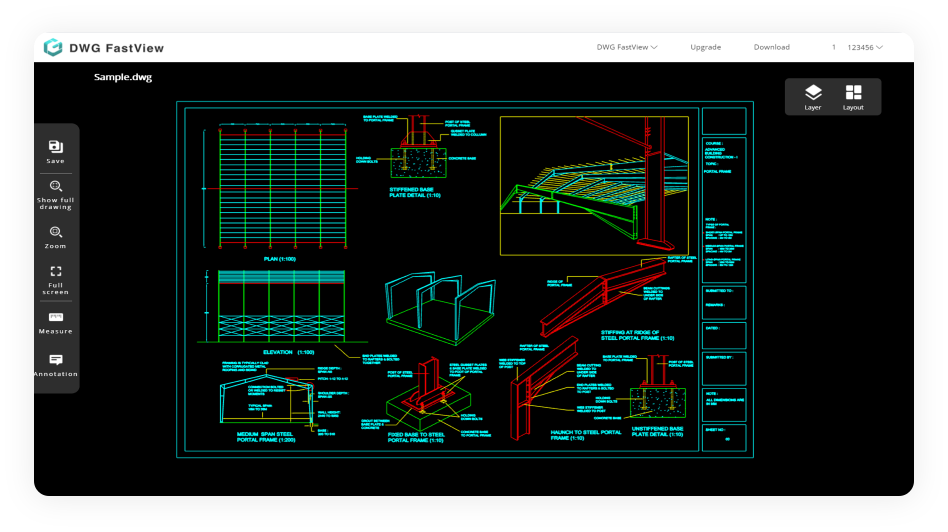




Subject:
The Evolution and Impact of 2D CAD in Modern Design (Aug 11, 2024)
Prayer Request:
The Evolution and Impact of 2D CAD in Modern DesignComputer-Aided Design (CAD) has revolutionized the way we approach design and engineering. Among the various types of CAD, 2D CAD remains a fundamental tool in many industries. This article explores the evolution, applications, and impact of 2D CAD in modern design.To get more news about online cad drawing 2d, you can visit gstarcad.net official website.The Evolution of 2D CADThe journey of 2D CAD began in the 1960s when the first CAD software was developed. Initially, CAD systems were used primarily for automating repetitive drafting tasks. Over the decades, advancements in technology have significantly enhanced the capabilities of 2D CAD software. Today, 2D CAD is more powerful, user-friendly, and accessible than ever before.
 Applications of 2D CAD2D CAD is widely used in various industries, including architecture, engineering, manufacturing, and construction. In architecture, 2D CAD is used to create detailed floor plans, elevations, and sections. Engineers use 2D CAD to design mechanical parts, electrical schematics, and civil engineering projects. In manufacturing, 2D CAD is essential for creating precise technical drawings and blueprints. The construction industry relies on 2D CAD for site plans, building layouts, and infrastructure designs.Benefits of 2D CADOne of the primary benefits of 2D CAD is its ability to improve accuracy and precision in design. Traditional hand-drawing methods are prone to errors, but 2D CAD allows designers to create exact measurements and alignments. Additionally, 2D CAD enhances productivity by enabling designers to quickly modify and update drawings. The software also facilitates collaboration, as digital files can be easily shared and edited by multiple team members.Challenges and LimitationsDespite its advantages, 2D CAD has some limitations. One of the main challenges is the lack of depth and realism in 2D drawings. Unlike 3D CAD, which provides a more comprehensive view of the design, 2D CAD is limited to flat representations. This can make it difficult to visualize complex structures and spatial relationships. Additionally, 2D CAD requires a certain level of skill and training to use effectively, which can be a barrier for some users.The Future of 2D CADAs technology continues to evolve, so does the future of 2D CAD. While 3D CAD is becoming increasingly popular, 2D CAD remains an essential tool for many professionals. The integration of 2D and 3D CAD systems is likely to become more common, allowing designers to leverage the strengths of both approaches. Additionally, advancements in artificial intelligence and machine learning may further enhance the capabilities of 2D CAD software, making it even more powerful and intuitive.ConclusionIn conclusion, 2D CAD has played a crucial role in the evolution of design and engineering. Its applications span across various industries, providing accuracy, efficiency, and collaboration. While it has its limitations, 2D CAD continues to be a valuable tool in modern design. As technology advances, the future of 2D CAD looks promising, with potential for further innovation and integration with other design tools.
Applications of 2D CAD2D CAD is widely used in various industries, including architecture, engineering, manufacturing, and construction. In architecture, 2D CAD is used to create detailed floor plans, elevations, and sections. Engineers use 2D CAD to design mechanical parts, electrical schematics, and civil engineering projects. In manufacturing, 2D CAD is essential for creating precise technical drawings and blueprints. The construction industry relies on 2D CAD for site plans, building layouts, and infrastructure designs.Benefits of 2D CADOne of the primary benefits of 2D CAD is its ability to improve accuracy and precision in design. Traditional hand-drawing methods are prone to errors, but 2D CAD allows designers to create exact measurements and alignments. Additionally, 2D CAD enhances productivity by enabling designers to quickly modify and update drawings. The software also facilitates collaboration, as digital files can be easily shared and edited by multiple team members.Challenges and LimitationsDespite its advantages, 2D CAD has some limitations. One of the main challenges is the lack of depth and realism in 2D drawings. Unlike 3D CAD, which provides a more comprehensive view of the design, 2D CAD is limited to flat representations. This can make it difficult to visualize complex structures and spatial relationships. Additionally, 2D CAD requires a certain level of skill and training to use effectively, which can be a barrier for some users.The Future of 2D CADAs technology continues to evolve, so does the future of 2D CAD. While 3D CAD is becoming increasingly popular, 2D CAD remains an essential tool for many professionals. The integration of 2D and 3D CAD systems is likely to become more common, allowing designers to leverage the strengths of both approaches. Additionally, advancements in artificial intelligence and machine learning may further enhance the capabilities of 2D CAD software, making it even more powerful and intuitive.ConclusionIn conclusion, 2D CAD has played a crucial role in the evolution of design and engineering. Its applications span across various industries, providing accuracy, efficiency, and collaboration. While it has its limitations, 2D CAD continues to be a valuable tool in modern design. As technology advances, the future of 2D CAD looks promising, with potential for further innovation and integration with other design tools.
No messages have been posted.
You must first create an account to post.